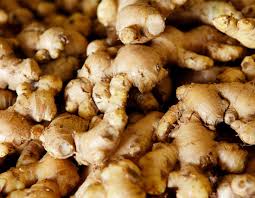AYURVEDIC BENEFITS
These seemingly magical botanicals have been an integral part of Ayurvedic healing for thousands of years—here’s how they work and what they can do for you.
Ayurveda, India’s traditional system of healing, uses more than 5,000 herbs. Some of these are especially versatile and well-matched for resolving common problems we encounter today, and have become popular remedies and preventive supplements for a variety of conditions.
“Ayurveda is about balance,” says Virender Sodhi, ND, founder of the Ayurvedic and Naturopathic Medical Clinic in Bellevue, Wash. “Balance in sleep, balance in food, balance in exercise, activity, sexual activity, all those things, and when you have created a balance, everything functions properly in the body.”
The first doctor to be certified both in naturopathic medicine in the U.S. and in Ayurvedic medicine in India, Sodhi has treated thousands of patients using these principles, producing some remarkable results. One patient arrived while waiting for a heart transplant, and after a six-month regimen of an Ayurvedic heart formula, with arjuna as the main herb, the patient no longer needed the transplant. Another had arteries that were 60 to 70 percent blocked, as a result of fibromuscular dysplasia. After a year of taking arjuna plus a combination of curcumin and CoQ10, she underwent a CAT scan that found her arteries were clear. Others have corrected underlying imbalances that led to high bloodpressure, and no longer need medication for hypertension; some resolved other chronic conditions.
Many Ayurvedic herbs have some similar mechanisms of action, such as reducing harmful chronic inflammation, but each also has unique qualities. To harness their power in different situations, these are Sodhi’s top herbal picks.
Top Ayurvedic Medicine Herbs
1 – Ashwagandha
Especially helpful for anxiety, stress, and adrenal dysfunction, ashwagandha can be an alternative to antianxiety and antidepressant medications. It lowers inflated levels of the stress hormone cortisol, and enhances natural levels of testosterone and DHEA, hormones that help maintain overall strength and muscle mass. It also calms harmful levels of inflammation.
2 – Arjuna
Also called Terminalia arjuna, this herb relieves angina, the chest pain related to heart disease, by relaxing and widening blood vessels in a similar way to nitroglycerin. It also strengthens blood vessels and makes them more elastic, and enhances collagen levels. Arjuna can be taken to treat or lower the risk of developing heart disease.
3 – Curcumin
Best known as a powerful natural remedy for chronic inflammation, curcumin (an extract of turmeric) relieves arthritis and other pain, cleans arteries, relieves depression, helps with indigestion, and may relieve symptoms of PMS and many inflammatory conditions, such as Crohn’s disease and ulcerative colitis. It’s also used to reduce cancer risk and enhance cancer treatment.
4 – Triphala
A classic Ayurvedic combination of three Indian herbs (haritaki, bahera, and amla, sometimes spelled slightly differently), triphala is used to enhance digestion and regularity, and helps good bacteria to flourish in the gut.
5 – Amla
One of the herbs in triphala, amla is also used on its own for rejuvenation, especially in cases of anemia or a weak immune system. It can be helpful for frequent colds or flu,
ongoing cough, bronchitis, or upper-respiratory tract infections. Amla is also used in conjunction with chemotherapy or radiation treatment for cancer.
6 – Boswellia
Also known as Indian frankincense, boswellia is an anti-inflammatory herb used to relieve pain and other symptoms of arthritis and other “-itis” conditions, as well as for asthma, hay fever, sore throat, menstrual cramps, stomach pain, and even pimples. It can be combined with other Ayurvedic herbs.
7 – Shatavari
Although it can be used by both men and women to strengthen the reproductive system, shatavari is best known as a female tonic that balances hormones. The herb enhances fertility, reduces vaginal dryness when menopausal symptoms begin and after menopause, and reduces hot flashes.
8 – Holy Basil
As a tea, holy basil is a traditional Indian remedy for colds and flu, and is also used to relieve other respiratory infections, asthma, and seasonal allergies, and to counteract stress and anxiety. The herb is often found in combination herbal formulas.
9 – Neem
A remedy for fungal, bacterial, and viral infections, neem is especially useful in preventing and treating shingles and the associated nerve pain, as well as ringworm. It should always be taken with food, as it lowers blood sugar, and can drive levels too low if taken on an empty stomach.
10 – Rauwolfia
Less common in the United States than the other herbs, rauwolfia is a natural remedy for high blood pressure. Stiff or hardened blood vessels make blood pressure rise, and rauwolfia works by making blood vessel walls more elastic, thereby restoring healthy blood flow and pressure.
11 – Gymnema Sylvestre
A go-to herbal remedy for elevated blood sugar and diabetes, gymnema sylvestre can also treat polycystic ovary syndrome. It reduces insulin resistance and improves metabolism of sugar and starch, and can help with weight loss.
Ayurvedic Basics: Beyond Herbs
Ayurveda literally means knowledge (veda) of life (ayu). For lasting health, Sodhi recommends following these basic principles:
- Sleep from 10 p.m. until 6 a.m., in tune with the earth’s natural rhythms.
- Eat food that is locally in season, as it provides nutrients that are essential during each time of year.
- Don’t drink water with meals, as it dilutes stomach acids that are essential for good digestion.
- Don’t eat fruit or sugary foods with meals, as sugar interferes with digestion.
- When eating, avoid distractions such as watching television or using electronic devices.
- Share meals with people whose company you enjoy.
- Walk regularly, as walking is the most therapeutic form of exercise throughout life.
Turmeric and Curcumin: What’s the Difference?
Among the top-selling supplements of the past few years, turmeric powder and curcumin come from the same plant, so it’s easy to get them confused. Here’s the difference:
Turmeric is a plant. Its root is ground into a powder to make “the golden spice” that imbues many Indian dishes with a yellow color. In India, where there is a much lower incidence of most lifestyle diseases than in the United States, turmeric is traditionally consumed in most meals, starting in childhood.
Curcumin is the chief health-promoting component of the turmeric plant, making up no more than about 3 percent of the root. Curcumin in supplements is a concentrated extract designed to work more quickly than the whole turmeric root.
“I have yet to find a single disease of any type for which curcumin has not been studied,” says Ajay Goel, PhD, professor at Baylor Research Institute in Dallas, who has been researching natural substances for about 25 years. And, he adds, more than 10,000 studies document the benefits of curcumin.
Goel recommends routinely eating turmeric as a spice to enhance overall, long-term health. However, he says, “If you’re intending to find a cure or to get relief from something immediate, then you have to take curcumin.” Otherwise, the concentration of curcumin in turmeric may not be sufficient to deliver quick results. In India, he says, these are some traditional Ayurvedic remedies:
- Mix 1 teaspoon of turmeric powder in a cup of full-fat milk and drink it to relieve an upset stomach, a headache, an oncoming cold, or other ailments. They key is to mix turmeric with a fatty liquid, to aid absorption.
- For cuts and scrapes, put turmeric powder under a bandage, to prevent infection and speed healing.
- Turmeric powder can be added to smoothies or any other food.






